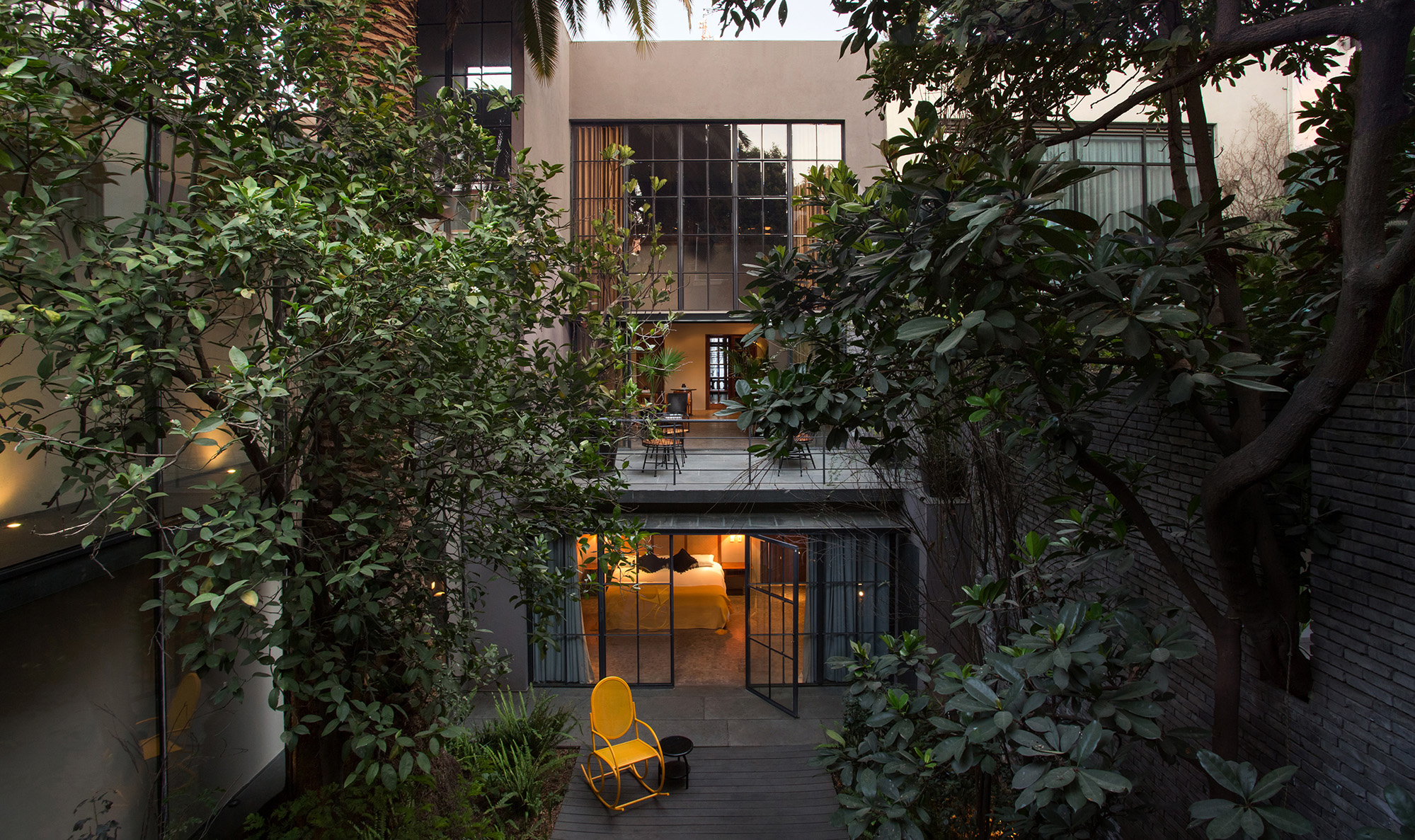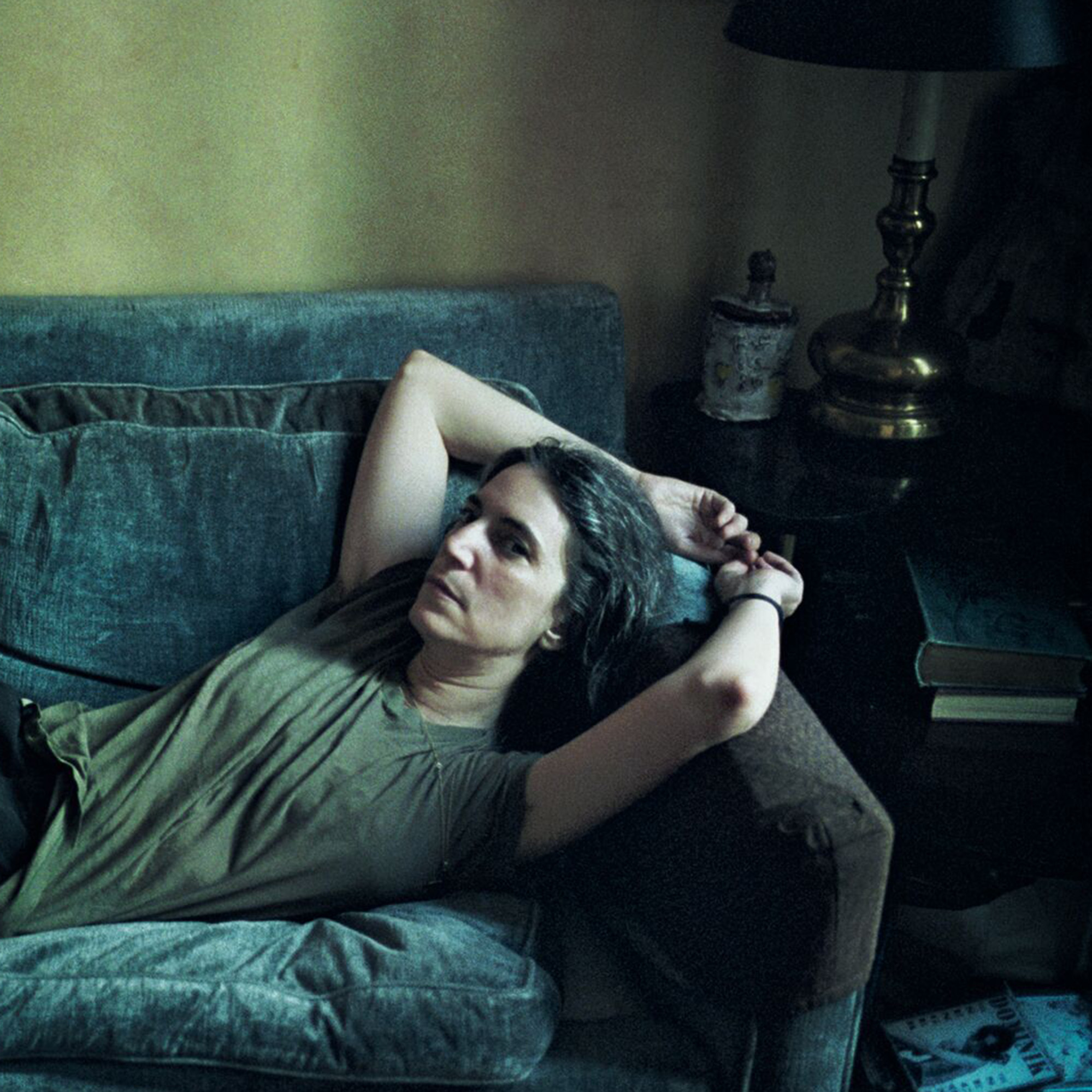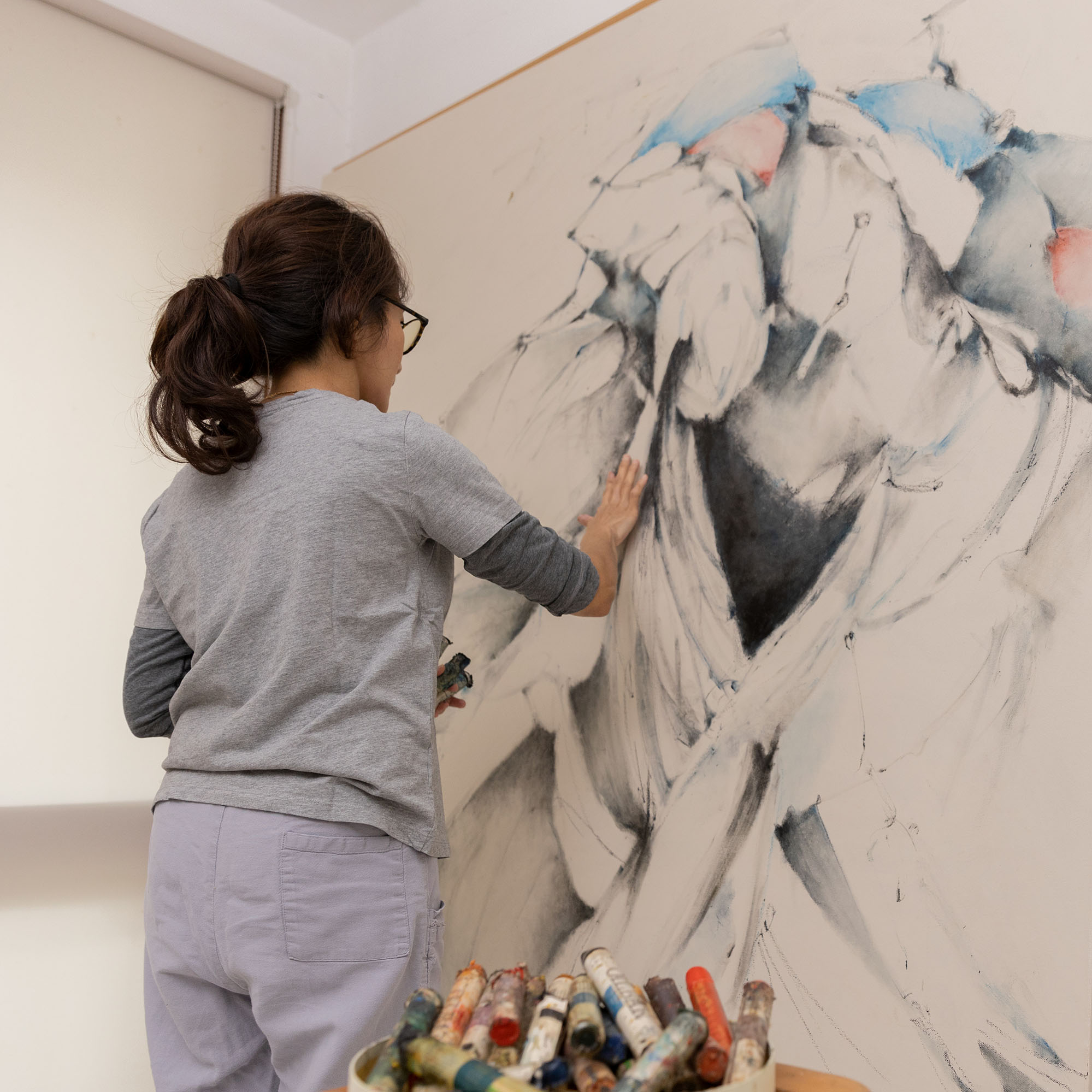Annie Leibovitz Shares Her Vision in Monaco
The newest gallery openings this week, including the dark side of the American dream, traditions of Aboriginal Australian painting, a cheeky photographer, and more.

You’re reading The Grand Tourist Curator, our weekly newsletter with the latest handpicked news and insights from the worlds of art, design, style, food, and travel. Sign up here to get The Curator delivered directly to your inbox.

How to Create the Perfect Long Weekend in Mexico City
I recently came back from a quick jaunt in Mexico City, a place I first visited in 2000 when the art collector Eugenio López Alonso opened The Fundación Jumex Arte Contemporáneo on the outskirts of the city. I was in awe of how big the city was back then, and it still felt sort of like an unknown place. I visited a few times over the years and heard rumblings of gentrification, but it wasn’t until this past trip that I saw how much the city had changed. Yes, it’s been discovered by the digital nomad class, and the prices have gone up, and some neighborhoods—dotted with natural-wine bars and Pilates studios—feel like areas of Brooklyn. But it’s still such an incredibly dynamic, world-class city. The National Museum of Anthropology alone could keep you busy for several days. In fact, I think Mexico City is one of those places that you need to return to again and again, so this is by no means an exhaustive list. Of course when I asked for new suggestions of places to eat and visit, I had about five different lists going: all of which averaged around 400 spots. Even with all the cross-referencing, it was a bit dizzying to narrow it down, but here is my whittled-down list. I stayed at Casa 9, a small hotel located in a former historic residence in the neighborhood of Condesa. The rooms had floor-to-ceiling windows that looked out onto a lush courtyard. There were only a few rooms, so I felt like I was living in my own apartment in the city.
Where to Eat
According to a recent article in T Magazine, there are 57,000 places to eat in CDMX, so it’s tough to even pick a taco stand. But you can’t go wrong at El Pescadito in Condesa. There’s always a line (both tourists and locals), but the staff is efficient so it moves fast, and the fish tacos are excellent. It’s also one of the more casual spots where you’ll feel safe trying out all the sauces and garnishes because they’re being replenished all the time. Contramar, the beloved seafood restaurant, is a must. It’s an obvious choice, but the airy dining room is lovely, the people watching is fun, and the food is excellent. Go for the tuna tostadas, stay for the fig tart. (I suggest booking ahead on weekends.) While you’ll find a fair share of tourists at Contramar, Los Panchos, just a short stroll from the anthropology museum, is a favorite among locals. This old-school spot (which has been around since 1945) features a wide-ranging laminated menu that caters to large groups. Order the carnitas (pulled pork) family-style. Jenni’s (Mérida 83 Col. Roma Norte 06700) has been serving different quesadillas on an ever-gentrifying corner in Roma for nearly 40 years. There’s usually a crowd, and the women cooking are busy and a bit intimidating, so just wait your turn. Opt for fillings like wilted quelites (garden greens), chile poblano, and mole verde. If you tire of tacos, Darosa is a tiny Italian restaurant in Juárez giving ’90s Williamsburg-meets-Milan vibes, with excellent pastas and salads. I couldn’t score a reservation when I was there, but I heard excellent things about Masala y Maíz, which serves dishes inspired by Mexico, India, and East Africa, all paired with natural wine, of course.
Where to Drink
The natural-wine bar and cocktail scene here is serious. In New York, I sort of roll my eyes at the whole cocktail-making cosplay, but I found the young bartender in the chore coat at Hugo El wine bar rather charming. Oropel is a new vermouth and natural-wine bar where the cool crowds go. The crowd spills out to the streets underneath a colorful mural. I’d never felt so ancient, but it was fun to discover where the kids hang. For an older crowd, head to Loup Bar, a tiny subterranean place in Roma Norte, one of the pioneers of the city’s new-wave wine-bar scene. Their mezcal Negroni is excellent. Salón Rosetta, the cocktail salon above the beloved restaurant, is one of the most elegant rooms in town, with excellent drinks. I wanted to steal all the stemware. Café Nin, started by the owners of Panadería Rosetta, is a great pit stop for a cocktail and an afternoon pastry (try the guava roll). And it’s located next to some of the city’s more interesting shops, including Carla Fernández and Xinú, a high-design perfume shop.
Shops and Galleries
I was curious to stop by Chic by Accident, but it was never open during my trip (Editor’s Note: It’s a must!). It’s in a pretty neighborhood, though, which is a lovely place to stroll. Instead, I headed to Commonwealth and Council, an excellent gallery located in a leafy courtyard in Roma Norte. The gallerists run an experimental space in L.A. and opened here in 2022. Nearby is Galería OMR, an early player in the city’s vibrant art scene that shows artists like Eduardo Sarabia, Pia Camil, and Superflex. As for shopping, I’m more inclined to buy baskets and textiles at Sunday pop-up stalls in the parks. However, I do think Onora in the Polanco neighborhood is worth the Uber trip for the intricate Michoacán ceramic candlesticks and textiles from Chiapas. (They’re also a third of what you’ll pay for them in shops here.) Oh, and one more tip: Go see a lucha libre match at the Arena México. It’s a three-hour spectacle of incredible athleticism, Lycra, and high camp. —Maura Egan

The Noble Quest to Avoid the Tourist Hoards of the Amalfi Coast
It’s a pickle of a summer paradox: The more the rocky coves and stacked houses scaling the hillside of Amalfi and Positano are romanticized on Instagram, the more they become oppressively overcrowded, and thus tiresome and just plain unromantic. The good news is that there’s still a famed coastal town on the southern edge of the Sorrentine Peninsula that resembles the before-times geography of pure escapism. Sorrento, wedged on a rocky promontory facing the Gulf of Naples and Capri, is often referred to as the “gateway” to the Amalfi Coast. But it functions more like a portal to holidays of yore.
The Greeks rested and relaxed here long before the town became popular with Roman emperors. The temples, patrician villas, forums, and baths built in those days are now in ruins, of course. But there are still plenty of ancient remnants that remain an active part of daily life. Flanking seafront restaurants serving dishes of gnocchi alla sorrentina and glasses of fresh, not-too-sweet lemonade, or hiding among the lemon groves lining the narrow winding road linking Sorrento are a constellation of small towns along the coast that include Positano and Amalfi.
It’s perhaps fitting, then, that the best stay in Sorrento is the Grand Hotel Excelsior Vittoria. It’s said to sit on grounds once occupied by a villa belonging to Emperor Augustus. My recent stay there coincided with another ancient discovery: This year marks the hotel’s 190th anniversary, though that might as well be thought of as the springtime of life in Sorrento years. Wandering the property’s sprawling gardens one day, I was told by an outdoor bartender that an ancient Roman bath had recently been uncovered by the pool.
Set on top of a 250-foot cliff, the Excelsior Vittoria serves pure, old-world panache at dizzying heights. Terraces overlooking Mount Vesuvius come with sea views so generous and vast that the endless blue vista begins to feel like a much-needed safety blanket for our current chaotic moment. The interiors, as the hotel’s name implies, are certainly grand: all marble hallways, frescoed ceilings, and throwback Belle Epoque bars. The regalness of the 81 rooms (one spacious suite is named after the legendary opera singer Enrico Caruso), however, is balanced, if not enriched, by the fact that the Fiorentino family, who founded the hotel in 1834, remain the property’s stewards.
Truly, the Fiorentinos are involved in every detail of the Excelsior Vittoria experience. Guido Fiorentino, the current fifth-generation owner, has enlisted his oldest son, Luca, with sales and marketing. Guido and his wife, Ornella, are often seen dining on the fifth-floor terrace at the hotel’s candlelit Michelin-starred restaurant Terrazza Bosquet. (Occasionally, you might catch them feeding stray kittens by the hotel’s stately gate, which shields guests from the cacophony of cobblestoned commotion outside.) One evening, the Fiorentinos even took me out for a meal at O’Parrucchiano La Favorita, a restaurant set in a 19th-century courtyard, where we were served regional red-sauce classics at a garden table canopied by a forest of lemon trees.
Having been a family-run phantasmagoria for nearly two centuries, the hotel has welcomed everyone from Wagner and Pavarotti to Marilyn Monroe and Sophia Loren. The last night I was there, the Fiorentinos invited the well-known Italian singer and actor Lina Sastri to serenade guests with operatic songs about heartbreak over dinner in the frescoed ballroom. Despite my personal rule that nobody, let alone Europeans, should be forced to witness a 40-year-old vacationing American man emote in public, I found myself moved to tears as waiters served plates of Piedmontese Fassone beef with sea urchin.
If I had to guess, it was the type of mythical romantic Italian moment that the Positano and Amalfi crowd will likely spend a lifetime of summers chasing after.
—Alex Hawgood

The newest gallery openings this week, including the dark side of the American dream, traditions of Aboriginal Australian painting, a cheeky photographer, and more.

For Italian fashion photographer Alessio Boni, New York was a gateway to his American dream, which altered his life forever. In a series of highly personal works, made with his own unique process, he explores an apocalyptic clash of cultures.

Plus, an exciting young British artist receives a retrospective, Marcel Dzama's whimsical drawings take a political turn in L.A., and more gallery openings.